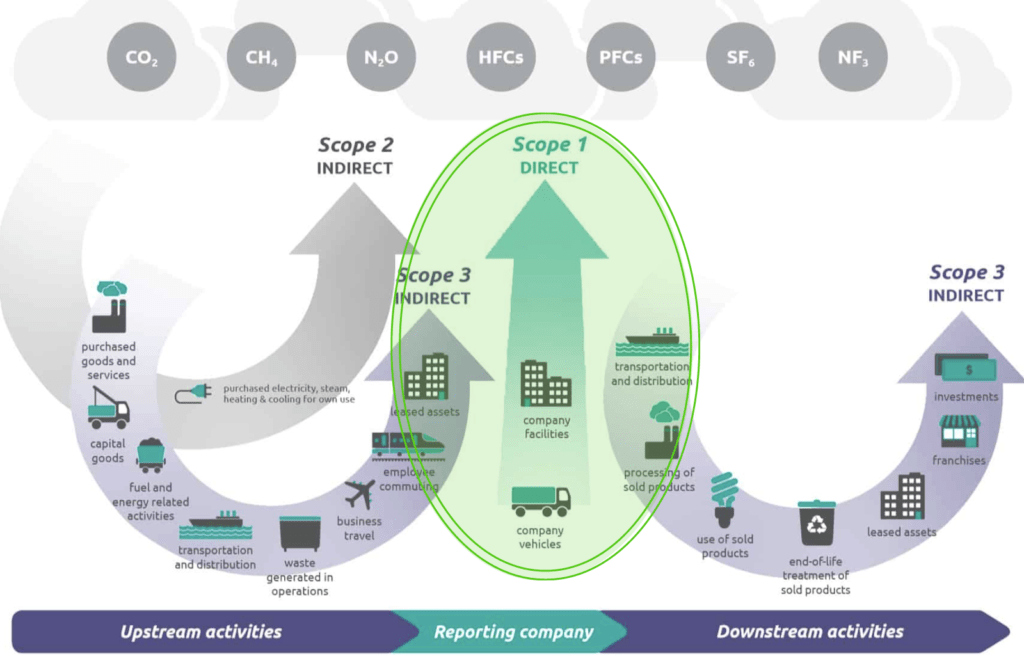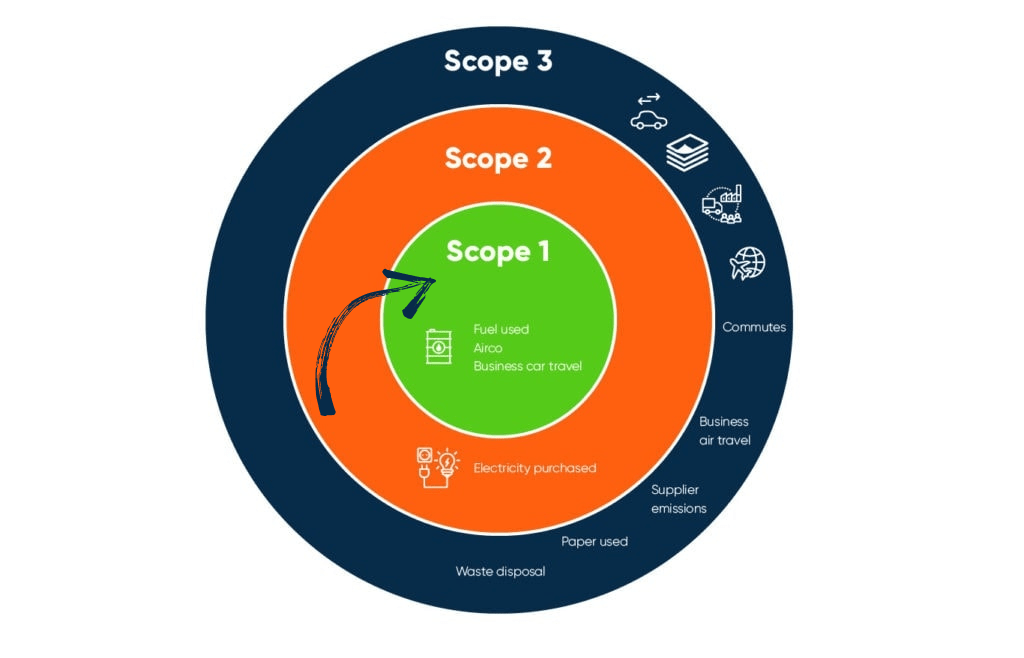Let’s take a step back.
Yes. Everyone would love to reduce their company’s or products’ carbon footprint. But before you do that you need a clear picture of your carbon emissions. And connect them to data that you can actually measure and monitor.
So how can you map out your carbon emissions?
The GHG provides clarity on scopes: scope 1, 2, and 3 emissions. This categorization is often also applied to the other 14+ other impact outcomes of a Life Cycle Assessment (LCA).
Scope 1: Emissions from scope 1 are direct emissions. This means that they directly come from your organization’s owned- or controlled source, such as; company vehicle emissions.
Scope 2: Emissions in scope 2 cover the indirect emissions from purchased sources, such as your organization’s consumed electricity or cooling.
Scope 3: Emissions from scope 3 include all the other indirect emissions within your entire value chain, this includes the upstream supply chain (suppliers), as well as downstream GHG emissions e.g. occurring with customers.

These three emission scopes were established by the Greenhouse Gas (GHG) protocol. The GHG Protocol was developed in the late ’90s and is the global standard framework for measuring and managing greenhouse gasses from both public and private organizations.
Zooming in on scope 1 emissions.
So let’s take a deep dive into the first scope: Scope 1 emissions. What do they entail?
Scope 1 emissions are the easiest to control as an organization. This is because they are your organization’s direct emissions. In other words, they are released into the atmosphere as a direct result of an activity or activities at a firm level. This is why scope 1 emissions are often also called direct emissions.
Together with scope 2 emissions, scope 1 emissions are mandatory to report when you’re reporting following the GHG protocol. Scope 3 emissions are not mandatory (yet). However, many organizations recognize that scope 3 emissions are crucial to moving towards a circular economy, and hence more and more organizations have scope 3 targets and reduction plans.
Image 1. Scope 1, 2, and 3 emissions. Original Infographic by Anthesis Group.
Scope 1 – 4 categories
More specifically, scope 1 emissions can be divided into four categories:
1. Stationary combustion
This first category includes emissions that come from the combustion of fossil fuels. Think of sources that include boilers that heat buildings or other industrial applications (e.g. gas-fired combined heat and power (CHP) plants).
The most common fuels that fall under this area are; natural gas, liquified petroleum gas, oil, fuel, propane.
*Scope 1 Biogenic Emissions: The GHG Protocol also requires that biogenic emissions (CO2 emissions from the combustion of biomass) are reported, but separately from the scopes in a memo item. If a company purchases biogas or biomethane through a contractual instrument, then the company will ensure that the instrument meets the Scope 2 Quality Criteria. If the instrument does not meet these criteria, the gas use should be reported as Scope 1 natural gas using a standard emission factor.
2. Mobile Combustion
This category includes greenhouse gas emissions from the burning of fuel of all vehicles that are owned or leased by an organization. Think of cars, trucks, or vans that are fuelled with petrol or diesel.
However, we’ve all noticed the increase in electric cars in the past few years. So what about those? Well, fully electric vehicles (EV’s) and plug-in hybrids will fall into scope 2 emissions (indirect emissions).
3. Fugitive Emissions
Fugitive emissions are unintentional releases/leaks of greenhouse gasses, such as refrigerant gases or gasses from air-conditioning units. A notorious emission type is refrigerants used in HVAC systems. These substances (F-gases) are therefore legislated in the EU under the F-gas regulation. The global warming potential (GWP) of these substances may, in some cases exceed 1000 CO2 equivalents and hence even small emissions can lead to significant impacts.
Therefore, organizations are highly encouraged to report on these fugitive emissions.
4. Process Emissions
The final emissions category is process emissions. As the name already makes clear, these are the emissions that are released during industrial processes and on-site manufacturing. Think of the CO2 emissions that are produced during cement manufacturing or the processing or manufacturing of chemicals.


